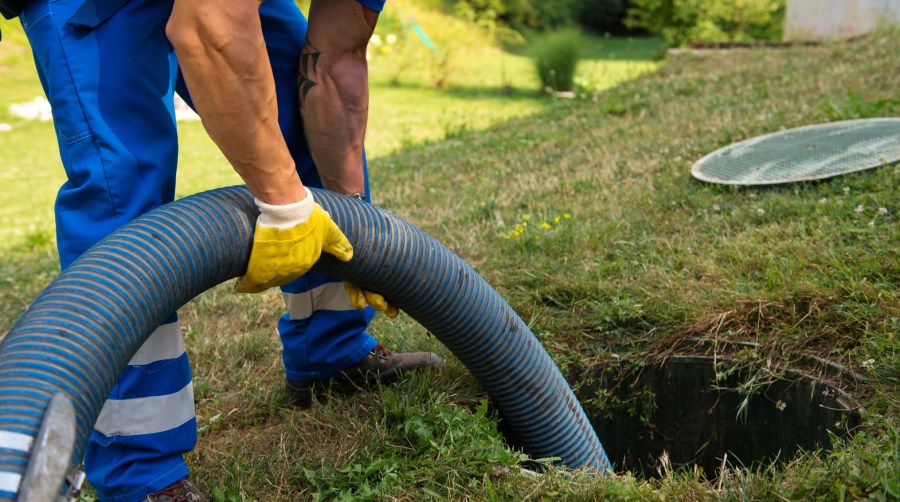Where Is The Filter In A Septic Tank

The septic tank is a very important part of the drainage organization in a home. It offers a very rubber way of disposing of household wastewater from kitchen, bath and toilets. The limerick of materials in the septic tank are scum layer, effluent and sludge which settles at the bottom of the tank.
It is a good idea to take your tank inspected yearly to decide the scum and sludge levels, to bank check the organisation'southward pipes, and to ensure that effluents are percolating properly at the bleed field.
When Should You Pump Your Septic Tank?
A septic tank should be pumped occasionally to become rid of its constituents and avoid stress build up in the entire septic organisation that can lead to its failure.
One way of knowing when to pump your tank is through the scum and sludge layers. It is appropriate to pump the tank when the scum layer and sludge brand upwardly 25-33% of the h2o depth in the tank, or when scum layer is inside vi inches of the outlet pipe, and sludge layer is within 12 inches the outlet layer. Other signs y'all should look out for are: Slow draining in tubs, showers, and washing machines, toilets being deadening when flushing, stench in drains, toilets, the area effectually the septic tank or your drain field or pools of water around the septic expanse.
Earlier Pumping Your Septic Tank
The first agenda on the listing is hiring a truck pump (if you accept none) and a skilled operator to assistance you lot with the pumping procedure. It is important to be present on site during the pumping to brand certain all the waste is pumped, and place any faults the tank may have. Earlier pumping start stirring the septic tank past using a muck rake which aids in breaking the scum layer and also the settled bottom sludge layer. Also remember to remove scum near the inlet line to avoid bottleneck.
Pumping Your Septic Tank
Connect the vacuum pipage to the pump truck and dip it slightly into the tank'south large central manhole and non into the baffle inspection ports. Pumping done through the baffle port tin cause damage to the leach field.
In a slow and continuous motion stir the top of the tank using the pipe, and the bottom of the tank using a muck rake. This will ensure that all the scum, effluents and sludge are mixed and 'sucked up' into the pump truck.
Keep with the pumping until you accomplish the bottom of the tank. Recall the goal is to remove all waste materials from the tank completely.
After Pumping Your Septic Tank
Later on pumping is finished, carefully examine the septic tank by listening carefully for any effluents spilling back into the tank. If observed, information technology is an indication that the drain field is saturated and should be replaced. Remove sludge remnants in the tank through backflushing.
Clean the vacuum hose and muck rake when the functioning is over and organize a pumping schedule with the operator. The waste product is then transported for proper disposal or delivered to independent companies specializing in the handling of the waste.
Prolonging Pumping Periods
Some products in the marketplace are designed to lengthen periods between pumping. They incorporate chemicals to hasten the process of breaking down the sludge in your tank. However, these chemicals tin can cause an imbalance in the natural ecosystem that exists in your septic tank, thus inhibiting the natural enzymes' power to properly interruption down the waste. The Environmental Protection Agency (EPA) recommends to apply these chemicals sparingly and not substitute them for regular septic tank inspections and pumping.
Where Is The Filter In A Septic Tank,
Source: https://www.bloglines.com/article/the-septic-tank-a-guide-on-when-and-how-to-pump-it?utm_content=params%3Ao%3D740010%26ad%3DdirN%26qo%3DserpIndex
Posted by: pettitsuded1943.blogspot.com


0 Response to "Where Is The Filter In A Septic Tank"
Post a Comment